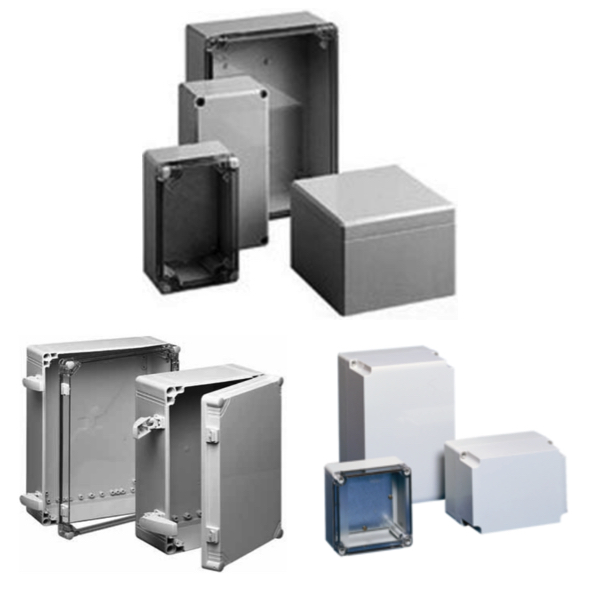ABS Enclosures

RSP Supply carries a full line of ABS enclosures engineered for durability, versatility, and long-term reliability. Made from acrylonitrile butadiene styrene (ABS), these enclosures offer the ideal balance of strength and lightweight construction, making them perfect for protecting electrical and electronic components in both indoor and outdoor environments.
ABS plastic provides excellent impact resistance and weather protection, ensuring dependable housing even in demanding conditions. When manufactured from flame-retardant grades, ABS enclosures also enhance safety, meeting strict standards for use with electrical equipment. Their performance makes them a dependable choice for industrial control systems, instrumentation, automation, and general-purpose electronics.
RSP Supply offers ABS enclosures in a wide variety of shapes and sizes, including handheld, wall-mount, and panel-mount configurations. Options such as machined openings, aluminum end panels, and mounting hardware enable easy customization to fit your specific equipment needs. NEMA-rated ABS enclosures also provide superior protection against dust, moisture, and environmental exposure, ensuring that sensitive electronics remain safe and operational.
FAQs
Q: What are ABS enclosures used for?
ABS enclosures are used to house and protect electrical, electronic, and control components in industrial, commercial, and general-purpose applications.
Q: Are ABS enclosures flame-retardant?
Yes. Many ABS enclosures are built with flame-retardant materials, making them suitable for electrical and electronic applications that require added fire safety.
Q: Can ABS enclosures be used outdoors?
Yes. NEMA-rated ABS enclosures are weather-resistant and can safely protect components from dust, rain, and moisture in outdoor environments.
Q: Are ABS enclosures customizable?
Yes. RSP Supply offers ABS enclosures with various customization options such as machined cutouts, aluminum end plates, and mounting accessories.
Q: What are the benefits of using ABS plastic for enclosures?
ABS provides an ideal combination of strength, impact resistance, lightweight design, and affordability, making it a top choice for versatile electrical housing.
Why Buy ABS Enclosures from RSP Supply
RSP Supply provides a complete selection of ABS enclosures designed for safe, efficient protection of electrical and electronic systems. With high-quality materials, NEMA-rated options, fast shipping, and expert support, we deliver reliable enclosure solutions for any application.

